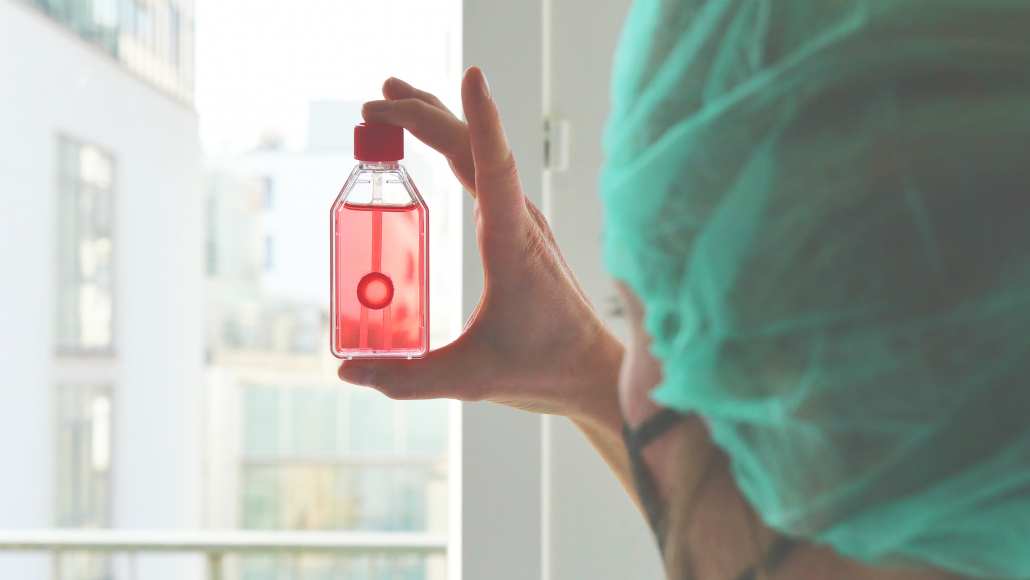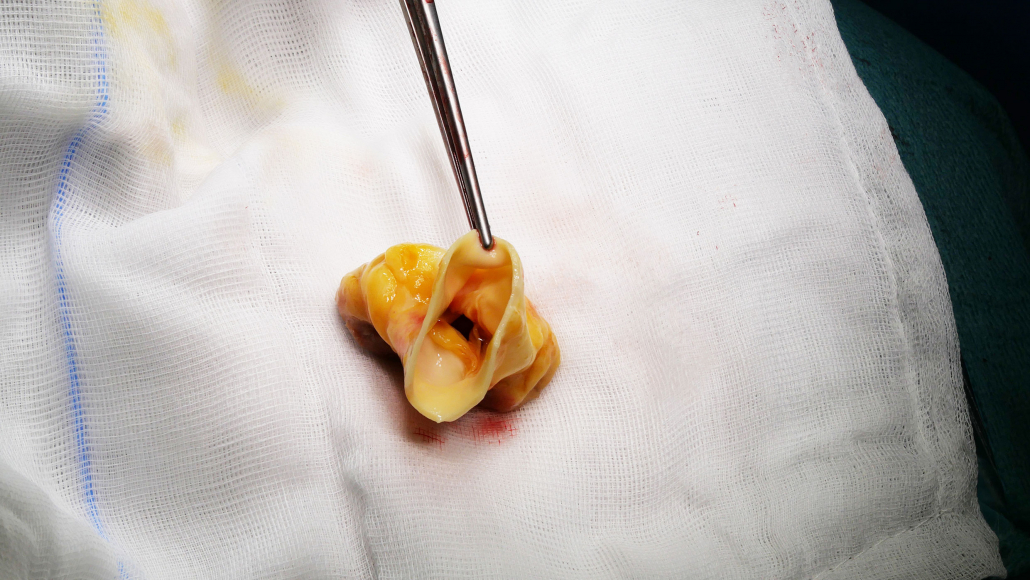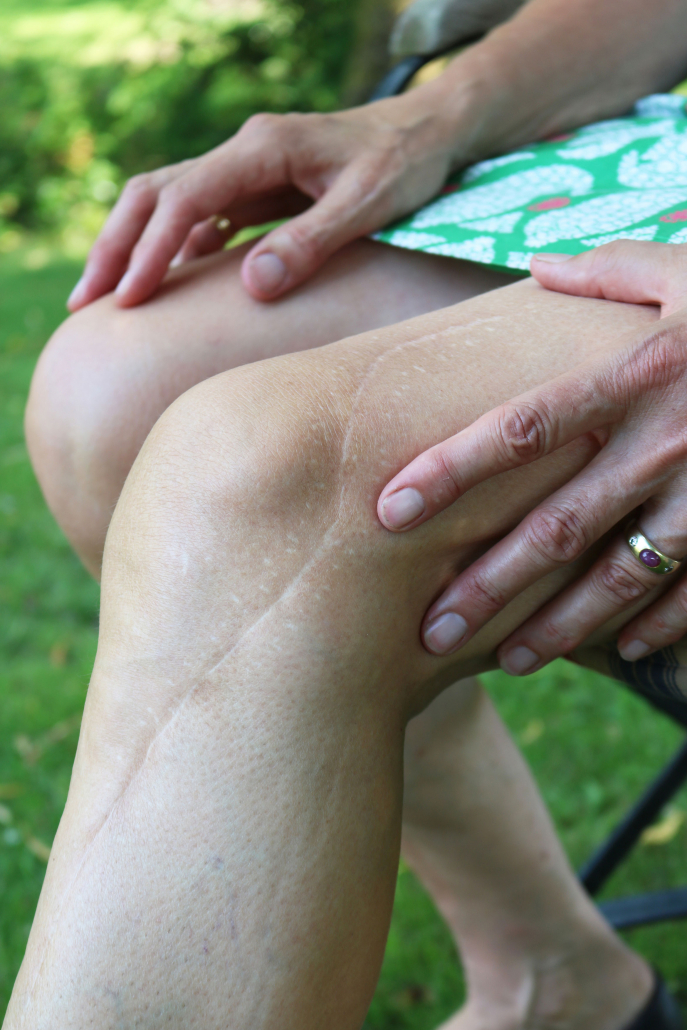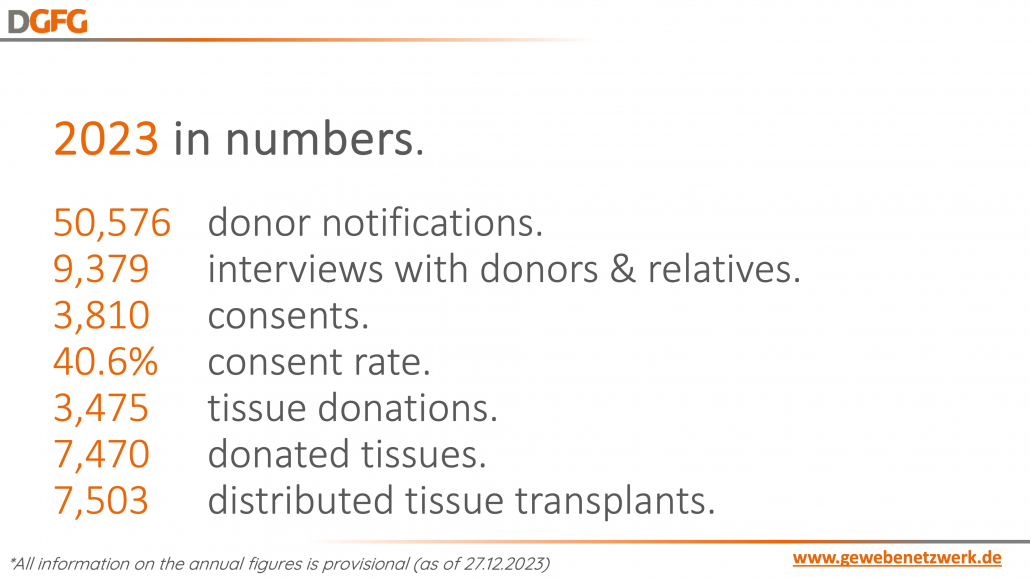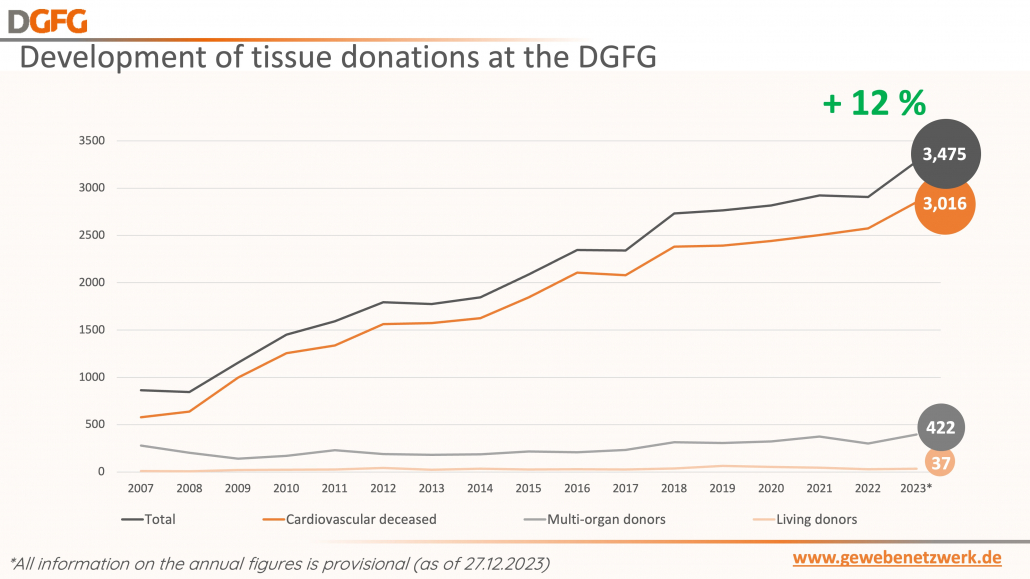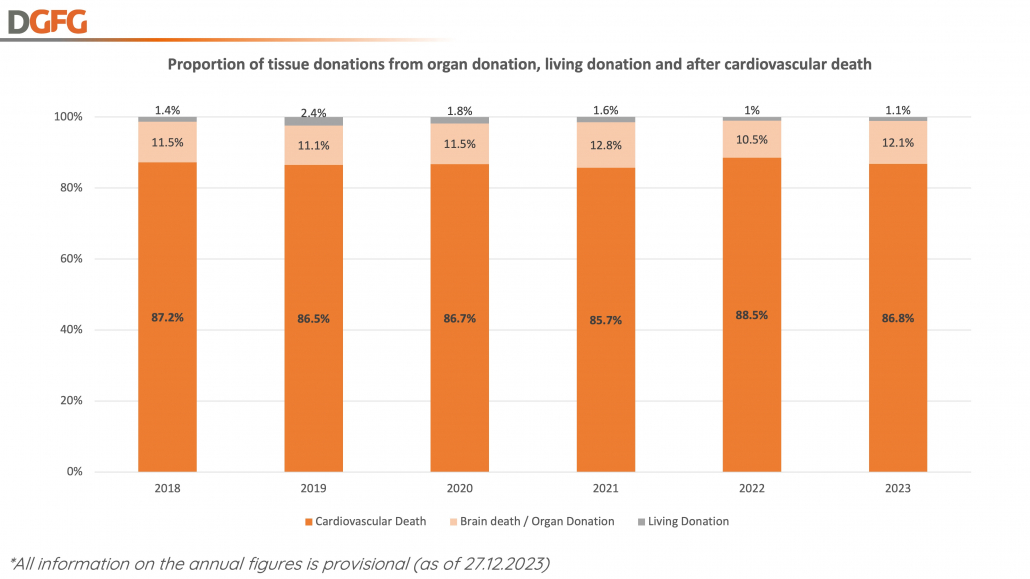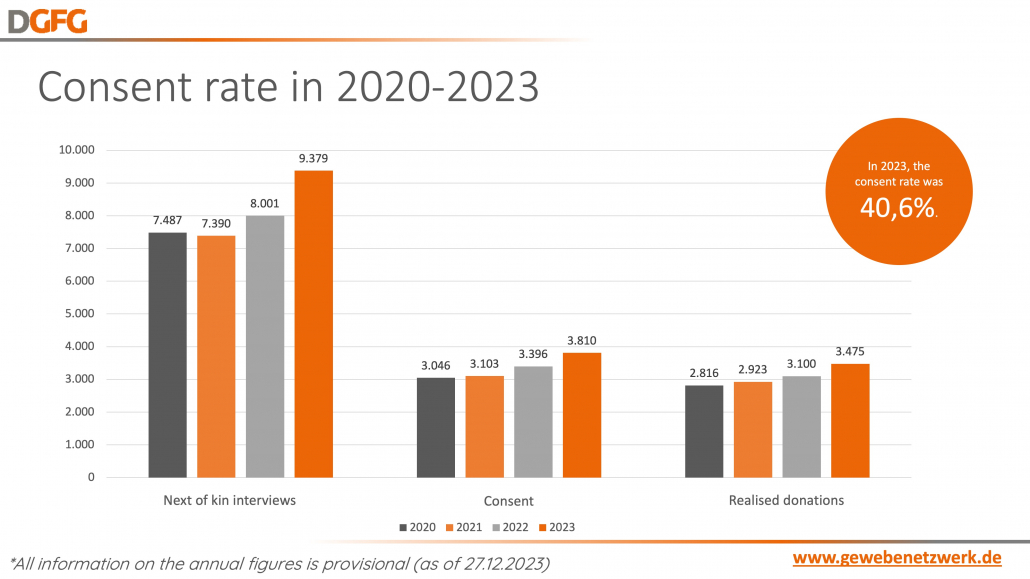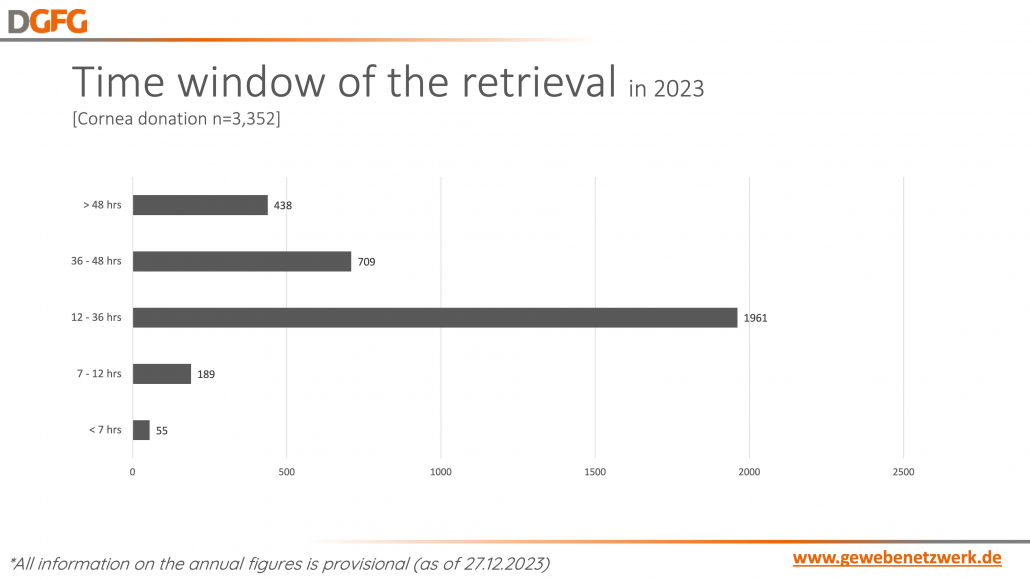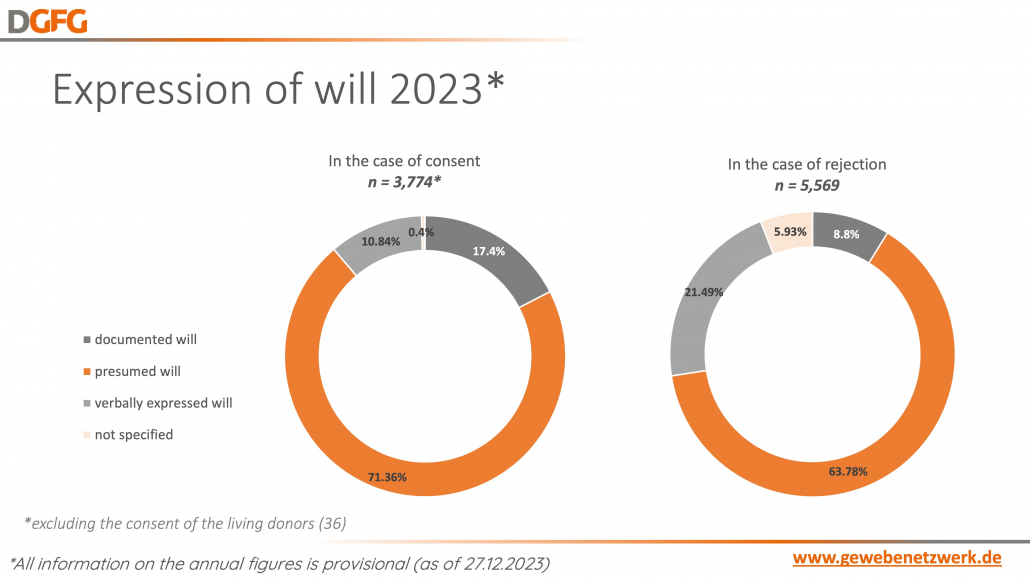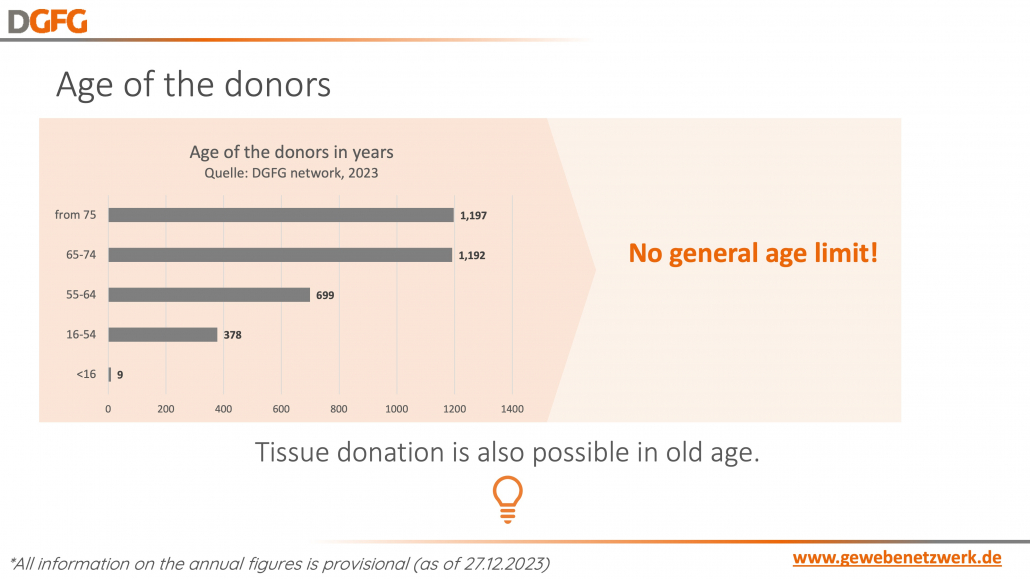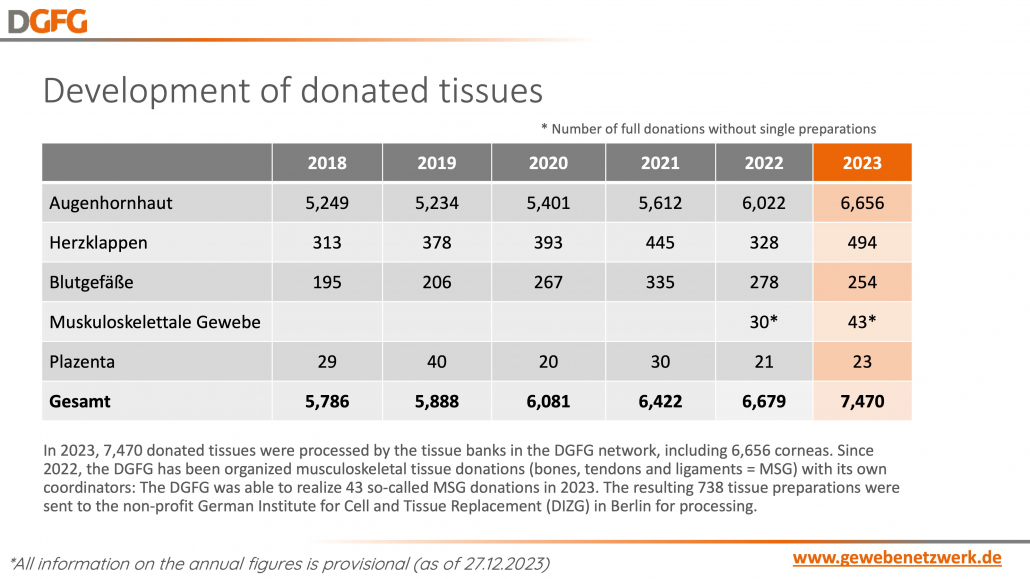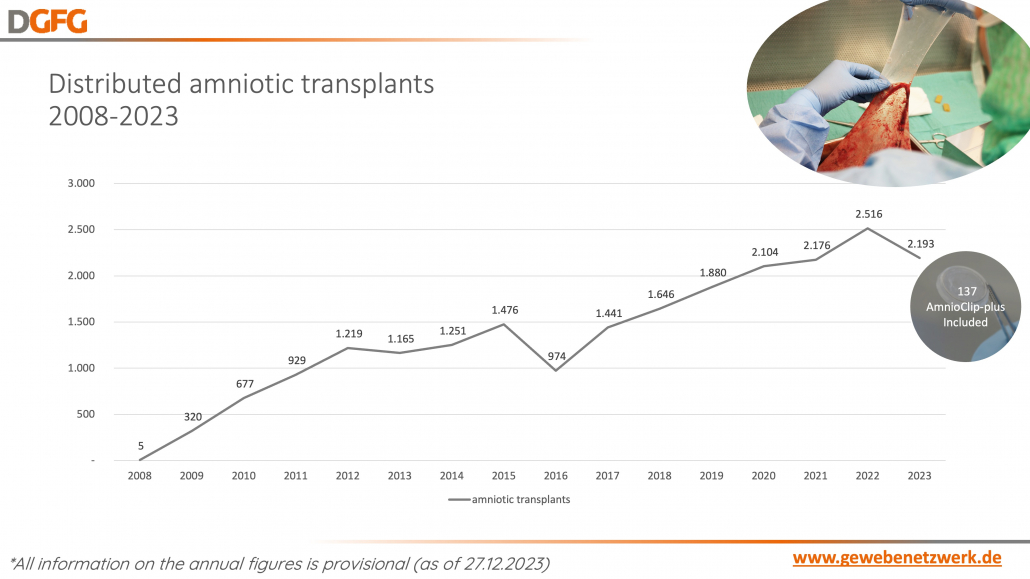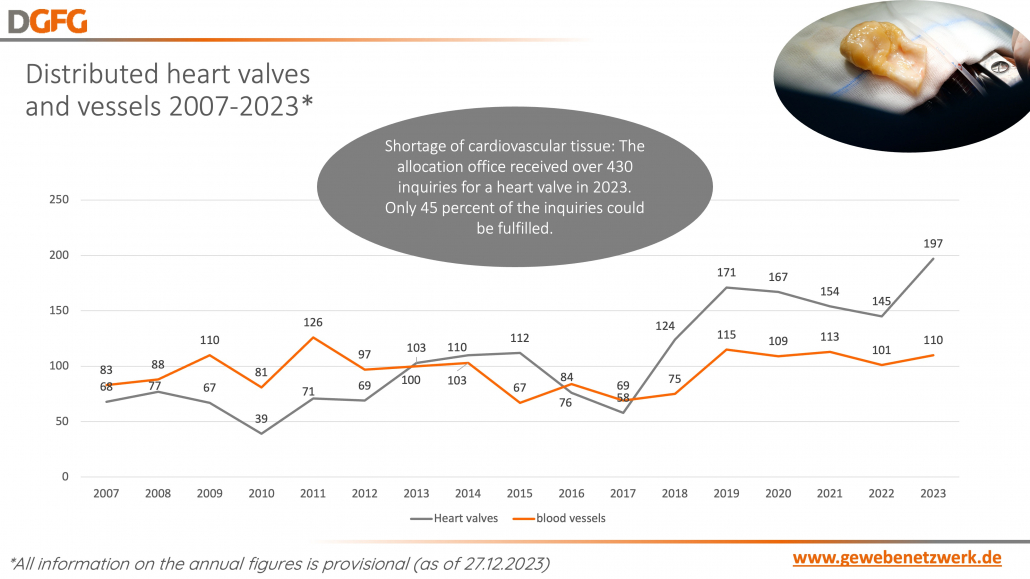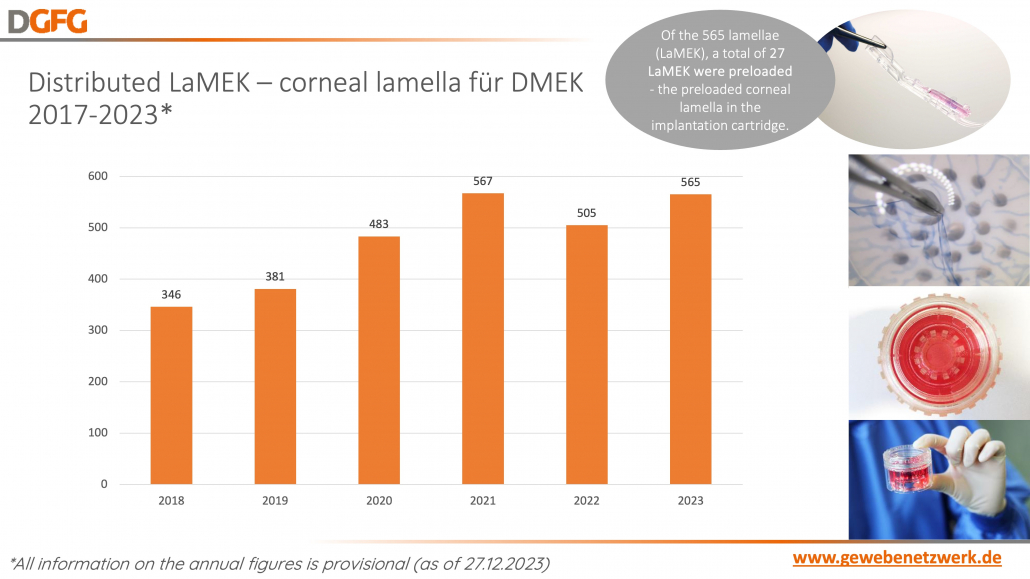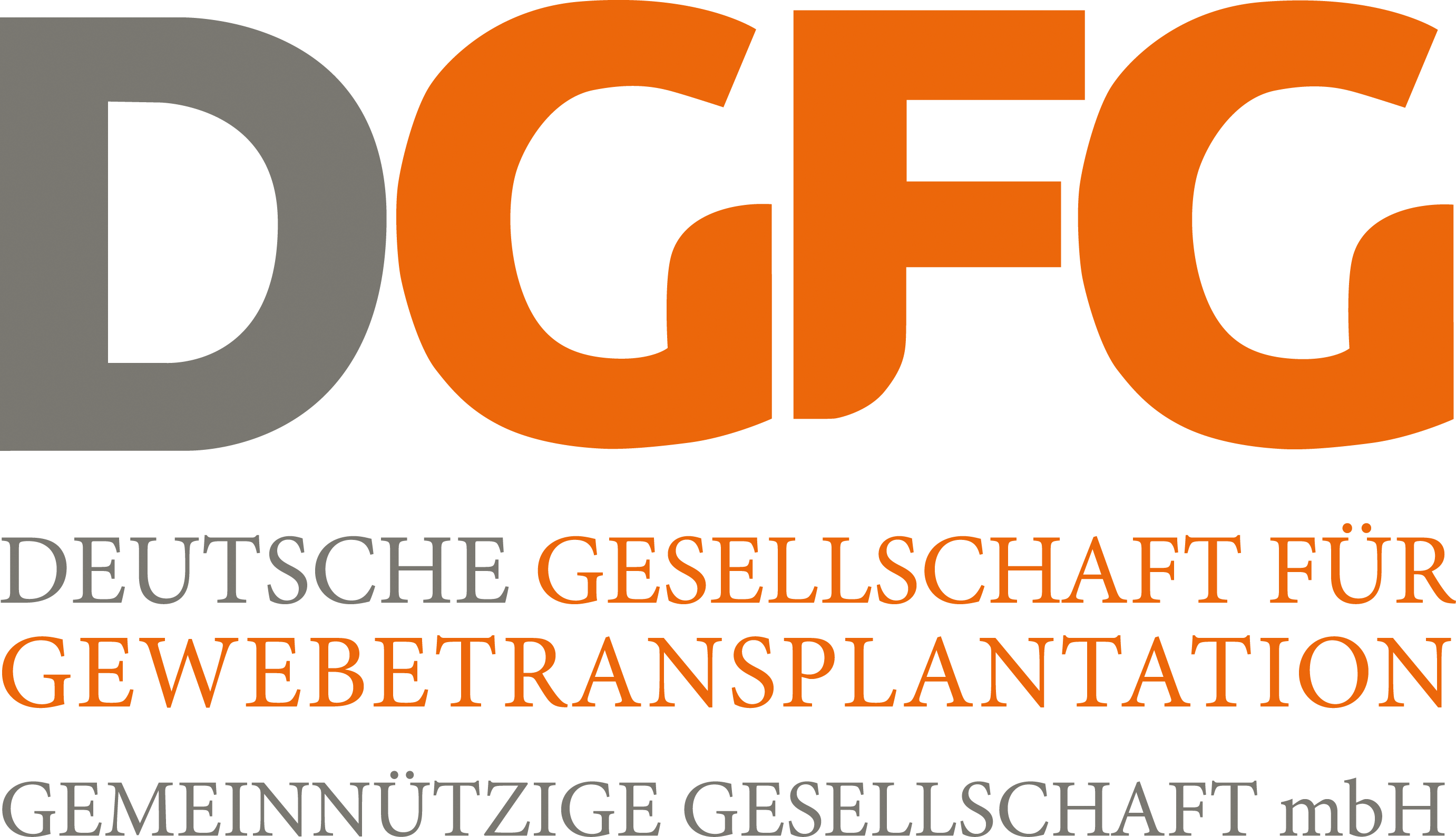Figures on tissue donation 2023
New record in tissue donation in Germany: 3,475 people donated tissue in 2023
Hannover/Germany – 01.01.2024: Tissue donation continues to be a success at German tissue network: A total of 50,576 donor notifications and 9,379 interviews with donors and relatives led to 3,475 tissue donations in 2023. The German Society for Tissue Transplantation (DGFG) thus recorded an increase of 12 percent compared to 2022. Around 87 percent of tissue donations were realized independently of organ donation in the case of cardiovascular deaths. The most donated tissue is the cornea of the eye: 3,352 people donated this tissue after death. Thanks to the high willingness to donate and a consent rate of almost 41 percent, the DGFG was able to distribute 7,503 tissue transplants, of which 5,003 patients received a cornea and 197 a heart valve. A highlight of the past year was the start of the Stuttgart Tissue Bank at the Katharinenhospital.
Caption: 12 percent more tissue donors: Tissue donation continues to be a success in Germany. More and more people are donating tissue, helping thousands of patients to improve their quality of life. Photo: DGFG
“We can look back on a successful year for tissue donation in 2023, as more than 3,800 donors and relatives agreed to donate tissue. We would like to take this opportunity to express our very special thanks to them,” says Martin Börgel, Managing Director of the DGFG. More and more clinics are becoming actively involved in tissue donation and joining the DGFG network. “By expanding the tissue donation programs in more and more clinics, we have succeeded in further improving the supply of tissue transplants to patients.”
New tissue bank in Stuttgart will further improve the supply with transplants
DGFG received more than 6,800 requests for a cornea. By the end of 2023, the DGFG was able to successfully allocate 5,003 corneal transplants. As the demand for donor tissue remains high and the donation programs are therefore being further expanded, the DGFG also increased its tissue processing capacities by opening a new tissue bank together with the Klinikum Stuttgart at the Katharinenhospital in May 2023. The tissue bank in Stuttgart is currently focused on corneas. In the long term, it will also be possible to process other tissues such as heart valves, blood vessels and amniotic membranes. This modern tissue bank is the only one in the greater Stuttgart area and will improve the supply of tissue to patients both in the region of Baden-Württemberg and nationwide.
Continued shortage of heart valves despite increased number of organ donations
Last year, the DGFG received more than 430 inquiries for a human heart valve. 197 heart valves were distributed in 2023, 52 more than the year before. “Unfortunately, we are still seeing a major shortage of heart valves, which is severely affecting the lives of many patients. In the coming year, we must continue to expand the donation programs for cardiovascular deaths together with the hospitals to have a reliable alternative to organ donation,” says Börgel. Most of this tissue still come from organ donors: Heart valves and blood vessels were recovered 247 times following an organ donation. In contrast, the number of these tissue donations from cardiovascular deceased persons was 31. As tissue donation, unlike organ donation, is not linked to brain death diagnostics, the DGFG continues to promote the donation program for cardiovascular deceased persons, which is independent of organ donation. Heart valves and blood vessels can be recovered up to 36 hours after death. Young patients in particular depend on human heart valves that can grow with them and do not require blood-thinning medication.
Expansion of the donation of bones, tendons, and ligaments
In addition to the donation of corneas, heart valves and blood vessels, in 2023, the DGFG also organized donations of bones, tendons, and ligaments. These musculoskeletal tissues (MSG) were donated 43 times. Patients undergoing trauma surgery or orthopedics after major injuries or trauma benefit from this tissue. Bone and tendon transplants can alleviate pain, prevent amputations, and restore mobility, including the ability to walk. The DGFG launched its MSG donation program in March 2022. Since then, its collection teams have successfully realized more than 70 MSG donations, from which over 1,250 tissue preparations could be obtained.
Increased interest in the use of amniotic membrane in wound care
The fact that amniotic membrane is a valuable treatment option in wound care aside from ophthalmology has been demonstrated by the increased number of inquiries for this transplant to the DGFG in the past year. Physicians used the amniotic membrane twelve times to achieve wound closure in patients. The membrane can be used for all types of severe wound healing disorders as well as for skin substitute in case of burns. The amniotic membrane is characterized by wound-healing-promoting and pain-reducing properties. For 2024, the DGFG expects a further increase in requests for this tissue, which expectant mothers can donate as part of a living tissue donation during planned caesarean births. Last year, the DGFG was able to distribute a total of 2,193 amniotic transplants, including 2,181 for ophthalmology to treat the surface of the eye.
All information on the annual figures is provisional (as of 27.12.2023).



